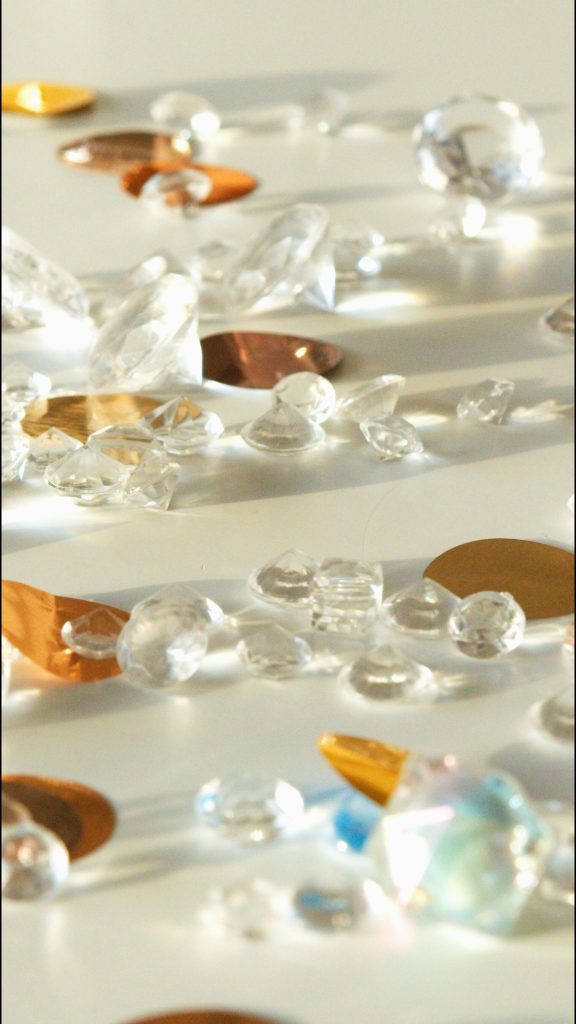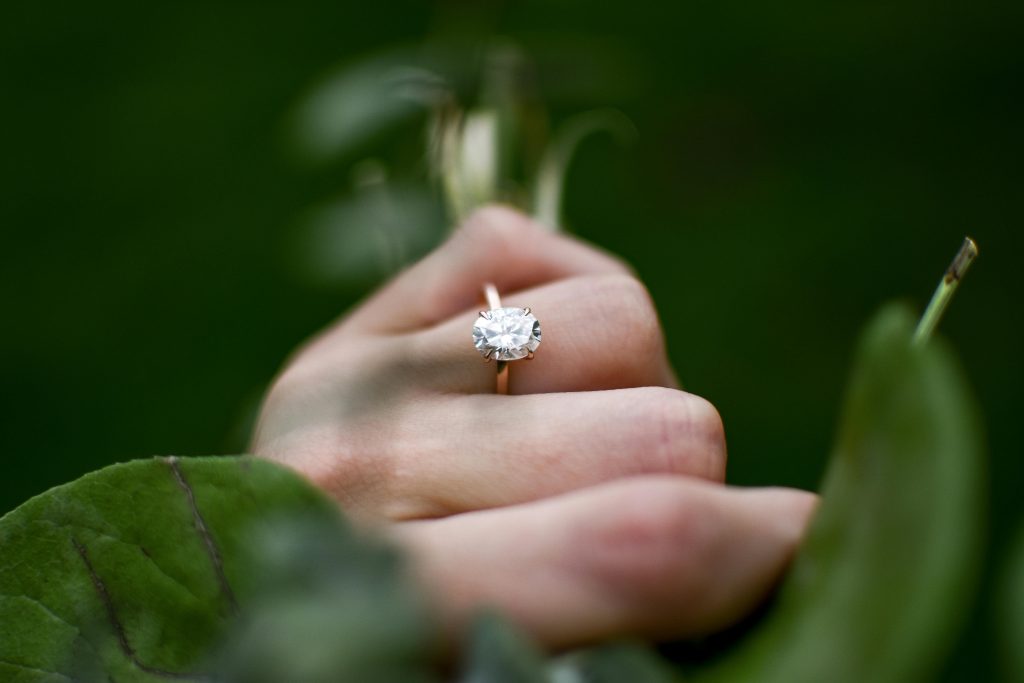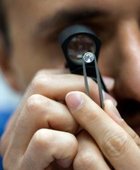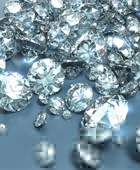As the demand for ethically sourced, sustainable alternatives grows in the jewelry industry, lab-grown diamonds have become a popular choice for many consumers. Lab-grown diamonds, also known as synthetic or man-made diamonds, are created in a laboratory environment using advanced technological processes that mimic the natural formation of diamonds. This article delves into the benefits and considerations of choosing lab-grown diamonds over naturally mined stones, exploring key factors like price, quality, environmental impact, and social responsibility.

What Are Lab-Grown Diamonds?
Lab-grown diamonds are chemically, physically, and optically identical to natural diamonds. The main difference between the two lies in their origin. While natural diamonds are formed over millions of years beneath the Earth’s surface, lab-grown diamonds are produced in a controlled laboratory setting within a matter of weeks. There are two primary methods used to create lab-grown diamonds:
- High Pressure High Temperature (HPHT): This process involves mimicking the conditions under which natural diamonds form by applying intense heat (around 2,500°C) and pressure (over 1.5 million pounds per square inch) to a diamond seed, which then crystallizes into a diamond.
- Chemical Vapor Deposition (CVD): In this method, a diamond seed is placed in a chamber filled with carbon-rich gas. The gas is heated, causing the carbon atoms to bond and crystallize into a diamond structure. CVD allows for greater control over the size and quality of the diamond being grown.
These methods produce diamonds that are indistinguishable from natural diamonds to the naked eye and even under magnification, making them a viable and attractive option for consumers.
Benefits of Lab-Grown Diamonds
- Affordability:
One of the most significant advantages of lab-grown diamonds is their cost-effectiveness. Lab-grown diamonds are typically 30-40% less expensive than natural diamonds of comparable size, cut, and quality. This price difference is primarily due to the shorter supply chain and lower production costs involved in creating diamonds in a lab, as opposed to the extensive and expensive mining operations required to extract natural diamonds from the earth.
For consumers who desire the beauty and elegance of a diamond but are budget-conscious, lab-grown diamonds offer an opportunity to purchase a larger or higher-quality stone for the same price as a smaller or lower-grade natural diamond.
- Ethical and Conflict-Free:
One of the most compelling reasons many people choose lab-grown diamonds is their ethical advantage. Unlike natural diamonds, which can sometimes be sourced from conflict zones, lab-grown diamonds are guaranteed to be conflict-free. The issue of “blood diamonds” or “conflict diamonds” has been a major concern for decades, with diamonds being used to fund armed conflicts and human rights abuses in certain regions.
Lab-grown diamonds eliminate the risk of contributing to these unethical practices. Consumers can be confident that their purchase is not linked to exploitation, violence, or environmental destruction. For individuals who prioritize social responsibility, lab-grown diamonds offer a transparent and ethically sound choice.
- Environmental Sustainability:
The environmental impact of natural diamond mining is significant. Mining operations involve large-scale excavation, water usage, and land disruption, which can lead to deforestation, habitat destruction, and water pollution. In contrast, the process of creating lab-grown diamonds has a much smaller environmental footprint.
Although lab-grown diamonds still require energy for production, especially in HPHT and CVD processes, they eliminate the need for extensive mining operations. Some companies producing lab-grown diamonds are also making strides toward further reducing their carbon footprint by using renewable energy sources. This makes lab-grown diamonds a more environmentally friendly choice for eco-conscious consumers.
- Customization and Innovation:
Lab-grown diamonds offer greater flexibility when it comes to customization. Because they are produced in a controlled environment, it is possible to grow diamonds in a variety of shapes, sizes, and even colors. Natural fancy-colored diamonds, such as blue, pink, or yellow, are extremely rare and often come with a hefty price tag. However, lab-grown colored diamonds are more affordable and accessible.
Additionally, the precise control over the diamond-growing process allows for innovation in terms of cuts and designs. Jewelry designers can experiment with unique and intricate settings and cuts, knowing they have access to diamonds that can be grown to specific specifications.
Considerations When Choosing Lab-Grown Diamonds
While lab-grown diamonds offer many advantages, there are also some important considerations to take into account when deciding whether they are the right choice for you.
- Resale Value and Investment:
One of the key differences between lab-grown and natural diamonds is their resale value. While natural diamonds have historically retained or even appreciated in value over time, lab-grown diamonds do not hold the same investment potential. The resale market for lab-grown diamonds is still developing, and because they are less rare than natural diamonds, they typically have a lower resale value.
For buyers who view diamonds as a long-term investment, this is an important factor to consider. Lab-grown diamonds are ideal for those looking for an affordable and ethically sourced gemstone, but they may not be the best option for individuals looking to make a financial investment.
- Perception and Tradition:
There is still a cultural and societal perception that natural diamonds are the “real” or “authentic” diamonds, while lab-grown diamonds are sometimes viewed as less prestigious. For some individuals, the idea of owning a naturally mined diamond holds a certain emotional or symbolic value, especially in the context of engagement rings, where tradition and symbolism often play a significant role.
That being said, public opinion is rapidly changing, and lab-grown diamonds are increasingly being embraced as a legitimate and desirable option. Many consumers prioritize the ethical and environmental benefits of lab-grown diamonds over the traditional allure of natural stones.
- Traceability and Certifications:
Although lab-grown diamonds are generally conflict-free and more environmentally friendly, it is still important to verify the source of the diamond and ensure it meets certain quality standards. Reputable companies that produce lab-grown diamonds often provide certifications from independent gemological laboratories, such as the Gemological Institute of America (GIA) or the International Gemological Institute (IGI). These certifications confirm the diamond’s characteristics, including its carat weight, color, clarity, and cut, ensuring transparency and quality.
Additionally, some consumers may prefer lab-grown diamonds that are produced using renewable energy or other environmentally sustainable practices. Researching the company’s production methods and commitment to sustainability can help ensure that your purchase aligns with your values.
Comparison Between Lab-Grown and Natural Diamonds
The decision between lab-grown and natural diamonds depends on a range of factors, including personal values, budget, and long-term goals. Below is a comparison of the key attributes of both types of diamonds:
| Attribute | Lab-Grown Diamonds | Natural Diamonds |
|---|---|---|
| Cost | 30-40% less expensive | Higher cost due to rarity and mining expenses |
| Appearance | Identical to natural diamonds | Unique inclusions due to geological formation |
| Ethical Considerations | Conflict-free, guaranteed | Potential for conflict diamonds; requires certification for ethical sourcing |
| Environmental Impact | Lower environmental footprint | Significant environmental degradation from mining |
| Resale Value | Lower resale value | Higher resale value; potential for appreciation |
| Availability | Customizable in shape, size, and color | Limited by natural availability and geological conditions |
| Investment Potential | Not ideal for investment | Historically retains or appreciates in value |

Long-Term Viability, Market Trends, and the Future of Lab-Grown Diamonds
As lab-grown diamonds become more integrated into the mainstream jewelry market, many consumers are curious about their long-term viability and whether they will continue to gain popularity. Understanding current market trends, consumer preferences, and future advancements in diamond technology can offer valuable insights into whether lab-grown diamonds are a lasting trend or a fleeting option.
Market Trends: Growing Demand for Lab-Grown Diamonds
- Increasing Popularity Among Younger Consumers:
Millennials and Gen Z consumers are leading the shift toward lab-grown diamonds, primarily due to their focus on ethical consumption, sustainability, and affordability. These younger generations tend to prioritize transparency and are drawn to companies that demonstrate social responsibility. This has led to a notable increase in demand for lab-grown diamonds, particularly for engagement rings and other special-occasion jewelry.
- Ethical Appeal: Many younger consumers are more conscious of the ethical and environmental impacts of their purchases. The guaranteed conflict-free origin of lab-grown diamonds, coupled with their smaller environmental footprint, aligns with the values of those who want to avoid the potential exploitation associated with mined diamonds.
- Value for Money: Price-conscious millennials are also attracted to the affordability of lab-grown diamonds. Given the option to purchase a larger or higher-quality stone for a lower price, many consumers see lab-grown diamonds as offering greater value for money without sacrificing beauty or quality.
- Retailers Embracing Lab-Grown Diamonds:
The retail jewelry industry has responded to this growing demand by expanding their offerings of lab-grown diamonds. Major jewelers such as De Beers, James Allen, and Brilliant Earth have introduced or increased their lab-grown diamond collections, recognizing the need to cater to a more diverse range of consumer preferences.
- Luxury Market Acceptance: While lab-grown diamonds were initially seen as a more affordable alternative to natural diamonds, they are increasingly being embraced by luxury markets as well. High-end designers and brands are incorporating lab-grown diamonds into their collections, offering consumers a wider range of options across various price points.
- Customization and Bespoke Jewelry: Retailers are also capitalizing on the ability to customize lab-grown diamonds, allowing customers to design bespoke pieces with more flexibility in terms of size, shape, and color. This trend reflects the growing demand for personalized and unique jewelry that reflects the buyer’s individual taste.
- Technological Advancements and Improved Quality:
As the technology used to create lab-grown diamonds continues to improve, the quality and availability of these stones are expected to increase. Today’s lab-grown diamonds are virtually indistinguishable from natural diamonds, but continued advancements in diamond growth technology will likely enhance their appeal even further.
- Color and Clarity: Technological improvements have made it possible to produce lab-grown diamonds with exceptional color and clarity, matching or even surpassing the quality of many natural diamonds. This has resulted in more consumers considering lab-grown diamonds as a viable option for high-quality, premium jewelry.
- Sustainability and Renewable Energy: Some manufacturers are exploring ways to make lab-grown diamonds even more sustainable by utilizing renewable energy sources and reducing the carbon footprint of their production processes. This innovation may further enhance the appeal of lab-grown diamonds for environmentally conscious consumers.
Lab-Grown Diamonds vs. Simulants: A Clear Distinction
It is important to clarify the difference between lab-grown diamonds and diamond simulants, as these terms are sometimes confused. Lab-grown diamonds are chemically and physically identical to natural diamonds, whereas simulants (such as cubic zirconia or moissanite) only mimic the appearance of diamonds but are composed of different materials.
- Cubic Zirconia (CZ): Cubic zirconia is a popular diamond simulant that is often used in costume jewelry. While it can appear similar to a diamond to the untrained eye, CZ is much softer (rated 8-8.5 on the Mohs scale, compared to 10 for diamonds) and less durable. It also lacks the brilliance and light-reflecting properties of a true diamond.
- Moissanite: Moissanite is another diamond simulant that is often compared to lab-grown diamonds. While moissanite has a higher refractive index than diamonds, giving it more “fire” or sparkle, it is still a distinct material and does not possess the same chemical composition as a diamond.
Lab-grown diamonds, by contrast, are not simulants—they are real diamonds in every sense. This distinction is crucial for consumers who may be concerned about the authenticity and durability of their purchase.
The Future of Lab-Grown Diamonds: Are They Here to Stay?
As lab-grown diamonds continue to grow in popularity, the question arises: are they a temporary trend, or are they here to stay as a permanent fixture in the jewelry industry? Several factors suggest that lab-grown diamonds will have staying power for years to come.
- Consumer Acceptance and Awareness:
The general acceptance of lab-grown diamonds is steadily increasing as more consumers become aware of their benefits. With younger generations driving demand and a growing emphasis on sustainability and ethical sourcing, lab-grown diamonds are poised to become a significant and lasting component of the diamond market.
- Changing Attitudes: Public perception of lab-grown diamonds has evolved rapidly in recent years. While they were once viewed as “less valuable” than natural diamonds, increasing awareness of their identical properties and ethical advantages has shifted consumer attitudes in their favor.
- Impact on the Natural Diamond Market:
The rise of lab-grown diamonds has also had a notable impact on the natural diamond industry. Some experts predict that lab-grown diamonds will continue to disrupt traditional markets, particularly as consumers become more conscious of the social and environmental issues associated with diamond mining.
- Market Segmentation: Rather than completely replacing natural diamonds, lab-grown diamonds may help to segment the market, offering different options for different types of buyers. Consumers seeking a luxury investment may still prefer natural diamonds, while those focused on ethical concerns and affordability may lean toward lab-grown stones.
- Investment in Research and Innovation:
The continued investment in research and innovation related to lab-grown diamonds suggests that the technology and quality of these diamonds will continue to improve. As production methods become more efficient and energy-conscious, the appeal of lab-grown diamonds is likely to expand, further integrating them into mainstream and luxury markets. - The Role of Certification and Transparency:
Certification and transparency are critical in building consumer trust in lab-grown diamonds. The industry has made significant strides in providing consumers with information about the origin, quality, and environmental impact of lab-grown diamonds. This transparency will continue to play a key role in driving consumer confidence and ensuring the long-term viability of lab-grown diamonds as a trusted and respected option.
Conclusion: Are Lab-Grown Diamonds Worth It?
Lab-grown diamonds offer a compelling alternative to natural diamonds, providing consumers with a more affordable, ethical, and environmentally sustainable option. They are identical in appearance, composition, and quality to mined diamonds, yet come without the significant environmental impact and potential ethical concerns associated with traditional diamond mining.
While lab-grown diamonds may not offer the same resale value or long-term investment potential as natural diamonds, they are an excellent choice for consumers who prioritize affordability, sustainability, and ethical sourcing. As technology advances and public perception continues to shift, lab-grown diamonds are poised to become an even more significant player in the global diamond market.
Ultimately, whether or not lab-grown diamonds are “worth it” depends on individual priorities and values. For those seeking a conflict-free, eco-friendly gemstone with the brilliance and durability of a natural diamond at a lower price point, lab-grown diamonds offer an attractive and viable option that is likely here to stay.




